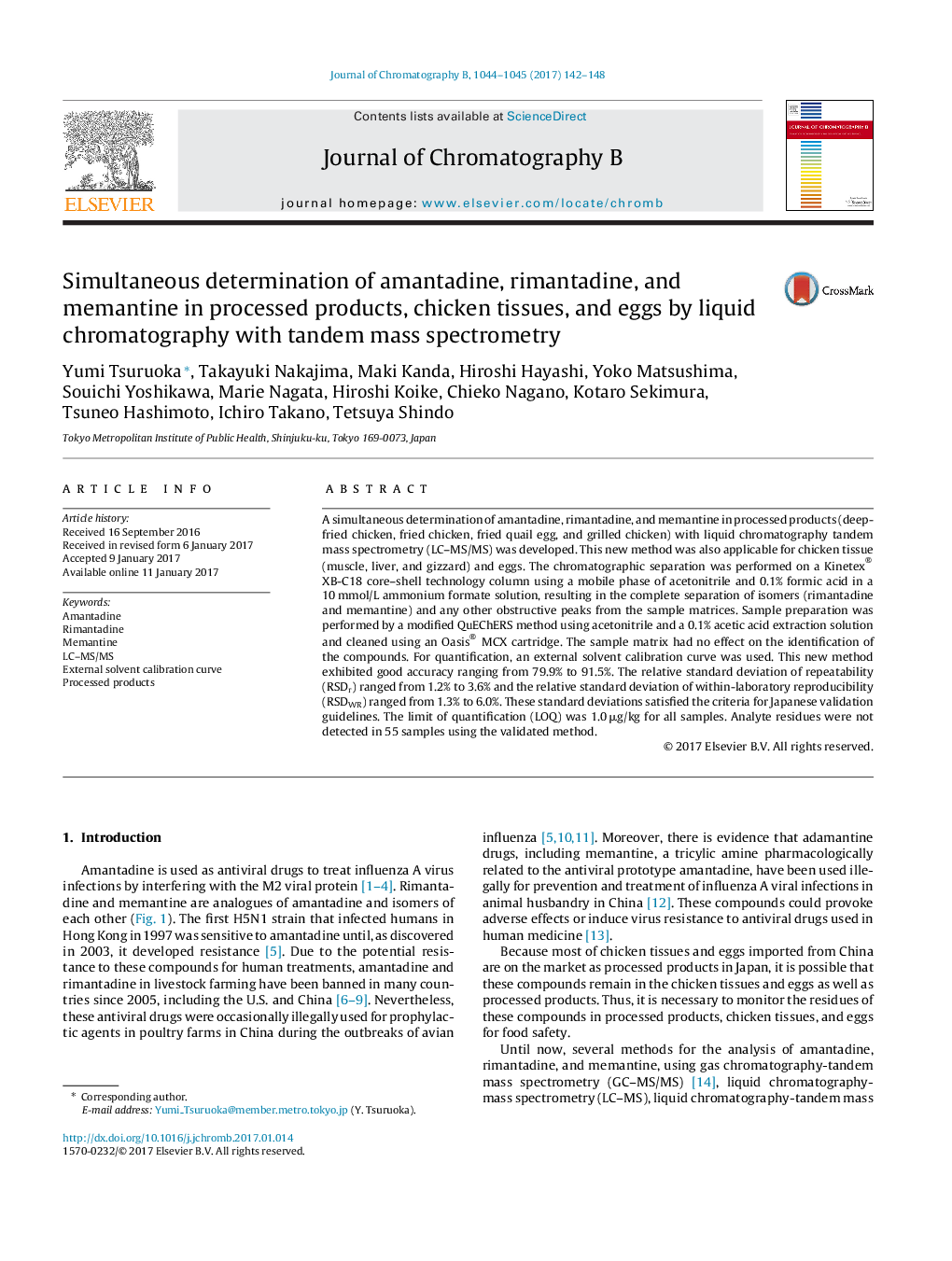| Article ID | Journal | Published Year | Pages | File Type |
|---|---|---|---|---|
| 5136545 | Journal of Chromatography B | 2017 | 7 Pages |
â¢The new validated LC-MS/MS method allows for simultaneous determination of amantadine, rimantadine, and memantine in four processed products, three chicken tissues, and eggs.â¢On a modern Kinetex® XB-C18 core-shell technology column using a mobile phase of acetonitrile and 0.1% formic acid in 10 mmol/L ammonium formate solution, three adamantane drugs could be completely separated.â¢This procedure had a good efficiency by modifying the process of QuEChERS extraction and using a two-step clean-up procedure: liquid-liquid distribution and Oasis® MCX cartridge purification.â¢The external solvent calibration curves were able to accurately quantify three analytes because matrix effects were made negligible by removing matrices in the samples.
A simultaneous determination of amantadine, rimantadine, and memantine in processed products (deep-fried chicken, fried chicken, fried quail egg, and grilled chicken) with liquid chromatography tandem mass spectrometry (LC-MS/MS) was developed. This new method was also applicable for chicken tissue (muscle, liver, and gizzard) and eggs. The chromatographic separation was performed on a Kinetex® XB-C18 core-shell technology column using a mobile phase of acetonitrile and 0.1% formic acid in a 10 mmol/L ammonium formate solution, resulting in the complete separation of isomers (rimantadine and memantine) and any other obstructive peaks from the sample matrices. Sample preparation was performed by a modified QuEChERS method using acetonitrile and a 0.1% acetic acid extraction solution and cleaned using an Oasis® MCX cartridge. The sample matrix had no effect on the identification of the compounds. For quantification, an external solvent calibration curve was used. This new method exhibited good accuracy ranging from 79.9% to 91.5%. The relative standard deviation of repeatability (RSDr) ranged from 1.2% to 3.6% and the relative standard deviation of within-laboratory reproducibility (RSDWR) ranged from 1.3% to 6.0%. These standard deviations satisfied the criteria for Japanese validation guidelines. The limit of quantification (LOQ) was 1.0 μg/kg for all samples. Analyte residues were not detected in 55 samples using the validated method.
